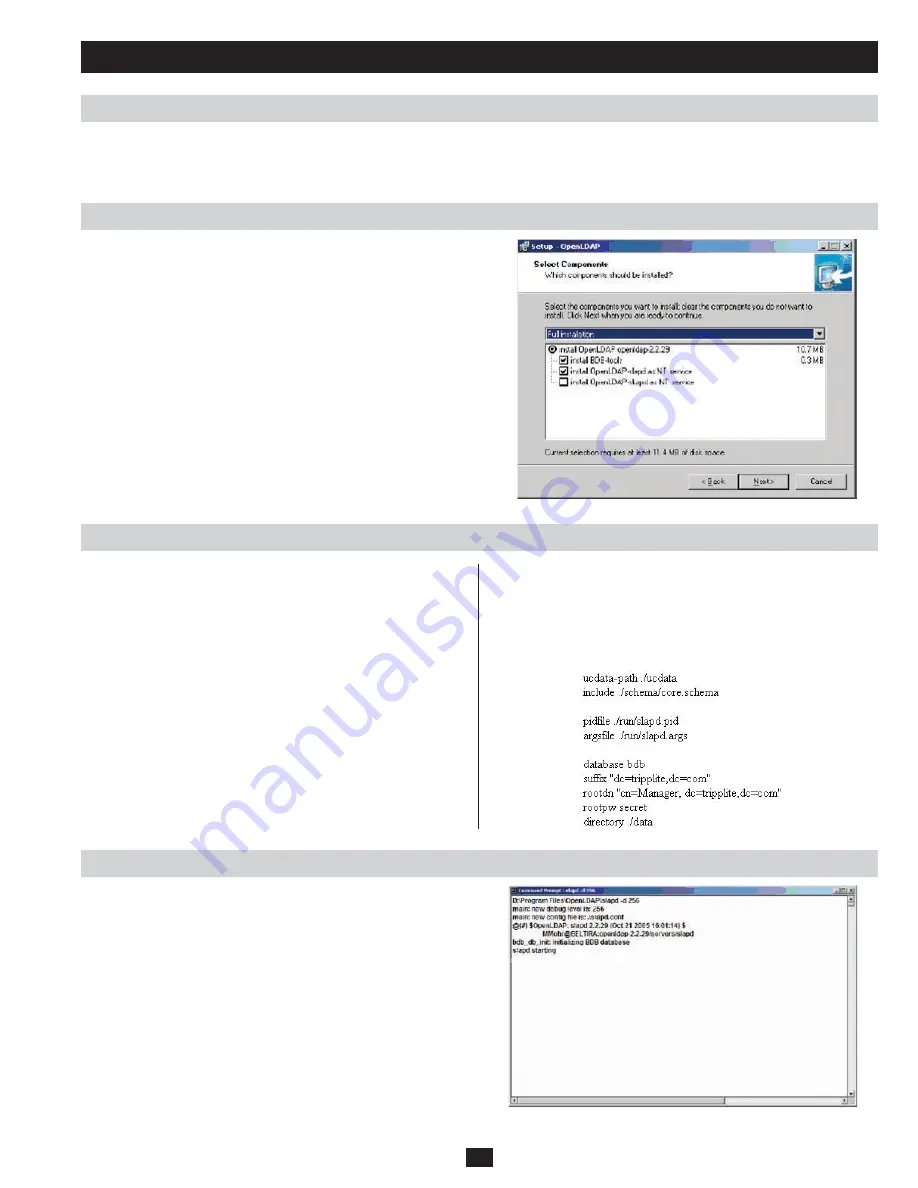
23
Administration
OpenLDAP Server
OpenLDAP Server Installation
OpenLDAP Server Configuration
Starting the OpenLDAP Server
OpenLDAP is an Open source LDAP server designed for UNIX platforms. A Windows version can be downloaded from:
http://download.bergmans.us/openldap/openldap-2.2.29/openldap-2.2.29-db-4.3.29-openssl-0.9.8awin32_Setup.exe.
After downloading the program, launch the installer, select your
language, accept the license and choose the target installation
directory. The default directory is:
c:\Program Files\OpenLDAP.
When the Select Components dialog box appears, select install BDB-
tools and install OpenLDAP-slapd as NT service, as shown in the
diagram:
The main OpenLDAP configuration file, slapd.conf, has to be
customized before launching the server. The modifications to the
configuration file will do the following:
• Specify the Unicode data directory. The default is
./ucdata.
• Choose the required LDAP schemas. The core schema is
mandatory.
• Configure the path for the OpenLDAP
pid and args start up files.
The first contains the server pid, the second includes command line
arguments.
• Choose the database type. The default is
bdb (Berkeley DB).
• Specify the server suffix. All entries in the directory will have this
suffix, which represents the root of the directory tree. For example,
with suffix dc=tripplite,dc=com, the fully qualified name of all
entries in the database will end with dc=tripplite,dc=com.
To start the OpenLDAP server, run slapd (the OpenLDAP server
executable file) from the command line.
slapd
supports a number of
command line options, the most important option is the d switch that
triggers debug information. For example, a command of
slapd -d
256
would start OpenLDAP with a debug level of 256, as shown in
the following screenshot:
• Define the name of the administrator entry for the server (
rootdn),
along with its password (rootpw). This is the server’s super user.
The rootdn name must match the suffix defined above. (Since all
entry names must end with the defined suffix, and the rootdn is an
entry.)
• An example configuration file is provided in the figure, below:
Note: For details about slapd options and their meanings, refer to the
OpenLDAP documentation.
















































